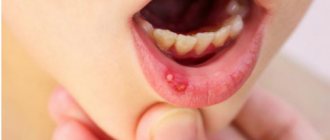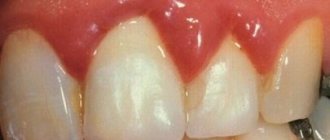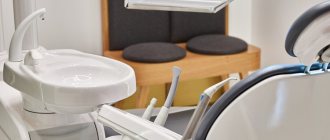Medicinal herbs and decoctions will help to completely get rid of a mild form of the disease, as well as at the very beginning of the development of the disease.
It is necessary to remember: herbal decoctions and infusions are also medicine; they should be used only after consultation with a doctor.
There are forms of the disease that cannot be treated without antibiotics and other medications. Therefore, folk methods and recipes for the treatment of stomatitis are of an auxiliary nature.
Treatment with honey and propolis
Propolis has unique antibacterial and anti-inflammatory properties. An alcohol tincture of propolis for stomatitis allows you to get rid of the resulting aphthae. The drug not only disinfects, but also anesthetizes the inflamed surface.
It is necessary to dissolve a teaspoon of the medicine in a glass of warm water, rinse the mouth with the resulting solution or use it for applications and lubrication of ulcers. It is advisable to first disinfect the affected area with hydrogen peroxide, and then apply propolis.
The medicine is used for:
- rinsing;
- applications;
- wiping.
It is strictly forbidden to apply alcohol tincture directly to canker sores!
Honey has powerful antiseptic properties and is included in many proven folk remedies. However, among doctors there is no clear answer to the question of how to treat and whether stomatitis can be treated with honey. It is believed that it can promote the proliferation of pathogenic bacteria.
Honey is most often used to treat diseases in children.
One of the most popular recipes is the egg-honey mixture. To prepare it you need to take:
- one egg (white);
- a teaspoon of honey;
- 1 ampoule of novocaine;
- one ampoule of vitamin B1 and B6.
Beat the resulting mixture well, take 1 tablespoon orally before meals, keep this portion in your mouth until completely absorbed.
Anti-inflammatory toothpastes –
There are very good toothpastes with anti-inflammatory components that can quickly reduce the symptoms of inflammation, relieve bleeding and swelling of the gums. Such pastes can be an excellent addition to the course of anti-inflammatory therapy, which we described above. But there is one subtlety with the choice of toothpastes. Scientific studies (source) have shown that chlorhexidine can be inactivated by sodium lauryl sulfate, which is part of toothpastes.
The fact is that after brushing your teeth with paste and rinsing your mouth with water, a thin layer of surfactants and copolymers (including sodium lauryl sulfate) still remains on the teeth and mucous membrane. And because We prescribe mouth rinses with chlorhexidine - immediately after oral hygiene in the morning or evening, then the presence of sodium lauryl sulfate in toothpaste quite significantly reduces the antimicrobial activity of chlorhexidine (especially if you decide to use its lowest 0.05% concentration).
Important: studies have shown that after brushing your teeth with a paste containing sodium lauryl sulfate, ideally 2 hours should pass (at least 30 minutes, but this is not enough) so that this does not affect the antimicrobial effect of chlorhexidine. Therefore, if you are going to use chlorhexidine as a mouth rinse, we recommend buying toothpaste without sodium lauryl sulfate (SLS). Here we can recommend you anti-inflammatory toothpastes or “President”, which do not contain sodium lauryl sulfate.
Read more about all the best toothpastes for strengthening gums at the link below. → Rating of toothpastes for gum inflammation
An example of an excellent paste without lauryl sulfate (SLS) -
Herbal infusions
In modern herbal medicine, both herbal decoctions (chamomile, sage, yarrow, oak bark) and tinctures (calendula, propolis) are used to successfully treat oral diseases. Traditional methods of treating stomatitis allow you to:
- relieve inflammation of the mucous membrane;
- reduce pain and swelling;
- relieve itching, reduce burning sensation;
- cure ulcers (aphthae) formed on the surface of the mucous membrane;
- improve the patient’s overall well-being;
- prevent relapses of the disease.
Chamomile, aloe, sage, oak bark for stomatitis can significantly reduce swelling and soreness of the mucous membrane, and prevent the development of the inflammatory process. They have an anti-inflammatory effect.
Herbal infusions can be used either alone or in combination with traditional medicines.
- Decoctions . To prepare them, you need to grind the herb in a coffee grinder, pour boiling water over it in a certain proportion, boil for at least 10 minutes, and then leave to infuse. A decoction is prepared from one plant (for example, chamomile, calendula, sage, St. John's wort) or from several (herbal mixture). After infusion, it should be strained and stored in the refrigerator for no more than three days. In the treatment of oral diseases, decoctions of chamomile, yarrow, sage, calendula, and cinquefoil are most often used. It should be remembered that when treating stomatitis with herbs, the therapeutic effect does not occur immediately, but 1-3 weeks after the start of therapy. Therefore, the patient must tune in to a long-term regular process.
- Infusions . They are prepared in much the same way, only they should not be boiled. Usually the herbal mixture is poured with boiling water, tightly closed and infused, after which it is filtered. It should be stored in the refrigerator and diluted with water before use. Infusions are prepared from the same herbs as decoctions. You can infuse herbs not with water, but with alcohol. They have a powerful antiseptic and anti-inflammatory effect.
- Solutions . Medicinal solutions are prepared immediately before use; their preparation consists of diluting the finished product with boiled water to obtain the required consistency. In no case should you apply undiluted alcohol infusions to the surface affected by stomatitis, as there is a high probability of getting a burn to the mucous membrane.
Gel and ointment for gums - application diagram
The standard course of anti-inflammatory therapy for gingivitis and periodontitis takes 10 days.
This course should include - 1) antiseptic rinses, 2) gel applications on the gums, 3) anti-inflammatory toothpaste. Usually 10 days is enough if you went to the dentist and had dental plaque removed. Remember that it is supra- and subgingival dental plaque (consisting of pathogenic bacteria) that causes gum inflammation. Therefore, the most important thing you can do before starting a course of gum gel applications is to go for ultrasonic teeth cleaning. If you use the gel for gum inflammation without removing plaque, then such anti-inflammatory therapy will only have a short-term effect. Carrying out a course of antiseptic rinses and gel applications on the gums is quite simple, using our recommendations. Let us remind you that the author of the article is a dentist with 20 years of experience, of which at least 10 years were devoted to periodontal treatment (treatment of gum inflammation, open curettage and flap operations).
Anti-inflammatory therapy regimen –
Gum treatment is carried out 2 times a day (morning and evening). It looks like this: first you have breakfast, then you need to brush your teeth and after oral hygiene, perform an antiseptic rinse. You need to rinse your mouth with chlorhexidine for 1 minute, but if you use “Parodontocid mouthwash” with anti-inflammatory components, then you can do it for 2-3 minutes (after rinsing your mouth, do not rinse your mouth with water under any circumstances).
If you rinsed your mouth with chlorhexidine, then the gel can be applied to the gums immediately, but if you rinsed your mouth with periodonticide, it is better after 5-10 minutes. This is due to the fact that after rinsing with chlorhexidine, a layer of chlorhexidine bigluconate is formed on the teeth and gums, which cannot be washed off by saliva, which will be effective for up to 7 hours. And after rinsing with periodonticide, such a layer does not form, but after spitting the solution in the oral cavity, its high residual concentration still remains for some time (and you need to give it time to act on the gums).
Next, we proceed to applying the gel to the gums -
The gel should be applied to the marginal gum around the necks of the teeth and interdental (gingival) papillae. The gel should be applied to the gums - both from the front surface of the teeth and from the side of the tongue/palate. It would be optimal if you dry the gums with a dry gauze pad before applying the gel, because in this case, the gel will adhere better to the mucous membrane. Next, there are 2 options for applying the gel.
Firstly, you simply squeeze out portions of the gel onto your finger and apply them to the gums around the necks of the teeth. Or the second option - you first rub a small portion of the gel into the gum, and then re-apply another portion of the gel onto it and leave it alone (without massaging). During the application of the gel, as well as after treatment, you will produce saliva - no need to accumulate it or spit it out. Behave as usual, swallowing a portion of saliva, as it happens in normal life (swallowing part of the gel is absolutely harmless).
Next, it is very important - you should not rinse your mouth or eat food for several hours (it is advisable not to even drink for at least 30 minutes). The second session of applying the gel to the gums is carried out in the evening - according to the same scheme, i.e. after eating and oral hygiene, after which it is already carried out - first rinsing the mouth with an antiseptic, and it all ends with applying the gel to the gums. And so on for 10 days.
Important: in parallel, there must be very good proper oral hygiene, which should include not only toothbrush and toothpaste, but also, ideally, dental floss. If teeth are brushed irregularly or poorly, there will still be a lot of microbial plaque on them, and there will also be food residues in the interdental spaces. And in this case, treatment will be ineffective. For the rules of oral hygiene, see the link below, but if you are not ready for such rules, gum inflammation will be your constant companion.
→ How to brush your teeth properly
Folk remedies for stomatitis in children
Treatment of stomatitis in children with folk remedies involves the following measures:
- rinsing with antiseptic solutions;
- wiping the affected surface of the mucous membrane with medicinal decoctions;
- applying medicinal mixtures to the surface of the ulcers.
For rinsing it is best to use:
- water-soda solution (1 teaspoon of soda per 1 glass of water);
- decoction of calendula or chamomile flowers.
Suitable for wiping:
- propolis tincture solution;
- calendula tincture solution;
- freshly squeezed aloe juice.
Apply to the surface of the ulcers:
- honey;
- egg white;
- rose jam;
- a mixture of egg white, honey and novocaine.
The drugs are applied to the surface of the mucous membrane until completely absorbed.
Diet for stomatitis
Diet is an important part of the treatment of any form of stomatitis. It is impossible to eliminate the inflammatory process by continuing to consume foods and drinks that irritate the oral mucosa.
In addition, the daily diet should consist of foods that are capable of replenishing energy, vitamin reserves, and the presence of other useful substances to strengthen the immune system in the fight against the disease.
The essence of the diet for stomatitis is to follow these rules:
- Fractional meals. Do not overload your body by eating large portions. Often stomatitis indicates a malfunction of the immune system, so eating small amounts of food at one time will avoid excessive stress.
- Gentle products. The mucous membrane, which has undergone an inflammatory process, reacts sharply to any irritants. Therefore, food must be crushed, all possible dishes must be crushed to a puree. Temperature is also important; food that is too hot or cold should be avoided.
Advice! Even tea and other drinks should be consumed at a temperature no higher than 40 degrees.
If you experience pain while eating, you need to eat slowly. If necessary, before and after eating, you should rinse your mouth with an antiseptic solution.
Features of the treatment of aphthous and candidal stomatitis
- In the aphthous form of stomatitis, painful ulcers (aphthae) form in the patient's mouth. To prevent the development of the inflammatory process, it is extremely important to maintain cleanliness. It is necessary to rinse your mouth with a soda solution after each meal. You can use a solution of hydrogen peroxide or propolis for rinsing.
- Thrush, or candidal stomatitis, is a fungal disease that most often affects children. A white cheesy coating forms on the surface of the mucous membrane, the patient complains of itching and burning. At the initial stage of development of the disease, you can get rid of its symptoms with the help of homeopathy.
Note that in adults, folk remedies for stomatitis are practically no different from children’s, except that the proportion of dilution of solutions for children is somewhat different. Typically, half the “adult dose” is used for children.
Antiseptic preparations and solutions
Successful treatment involves the use of antiseptic solutions, ointments, and other drugs. They prevent the proliferation of pathogenic bacteria on the inflamed mucosal surface, relieve inflammation, and promote rapid healing of ulcers.
For the viral form of the disease, medications are prescribed that, in addition to antibacterial properties, increase immunity and have an antiviral immunomodulatory effect.
Popular immunomodulators:
- Viferon;
- interferon;
- Lafarobion.
Effective for candidiasis:
- clotrimazole;
- vitaon;
- trypsin.
To disinfect the oral cavity, use:
- aekol;
- chlorophyllipt;
- iodinol;
- hexoral.
Below we will tell you how to treat stomatitis at home, what medications are prescribed to disinfect the oral cavity and relieve inflammation.
Iodinol (blue iodine)
Iodinol (blue iodine) has been successfully used to treat oral diseases. It is considered a safe antiseptic, suitable for adults and children. Used for rinsing, smearing, and applications. You should rinse your mouth with iodine for a week.
For children, it is preferable to lubricate the affected surface with a cotton swab dipped in the medicine.
Zelenka
The classic method of treating stomatitis is drying and disinfecting ulcers using ordinary brilliant green. It should be applied to the inflamed areas with a cotton swab 2-3 times a day.
Using brilliant green too often causes the mucous membrane to dry out!
To get rid of green marks, you need to brush your teeth thoroughly.
Methylene blue (blue)
In dentistry, an aqueous solution of blue is used to treat candidal stomatitis; an alcohol solution causes a burn to the mucous membrane. A cotton swab dipped in blue is used to lubricate all the sores in the patient’s mouth. The procedure should be carried out after each meal, after rinsing the mouth with a herbal decoction.
Lugol's solution
Lugol's solution has antimicrobial properties - an effective drug widely used for tonsillitis, sore throat, and inflammation of the tonsils. It is successfully used in dentistry. The inflamed mucous membrane is treated with a cotton swab soaked in Lugol's solution. Carry out the procedure until complete recovery.
Fukortsin
Fucorcin is an effective antimicrobial and antifungal drug. It promotes rapid healing of aphthae, destruction of pathogenic microbes and fungal spores.
Fukortsin is intended for external use; the oral cavity should be treated with extreme caution!
The medicine is carefully applied to the cleaned surface with a cotton swab. Do not lubricate healthy areas of the skin with the solution.
Hexoral
For candidiasis and herpetic stomatitis, hexoral, an antiseptic antimicrobial drug, is available in the form of liquid and spray. Twice a day you need to treat the inflamed surface with hexoral, do not swallow the medicine! The course of treatment is 5-7 days.








